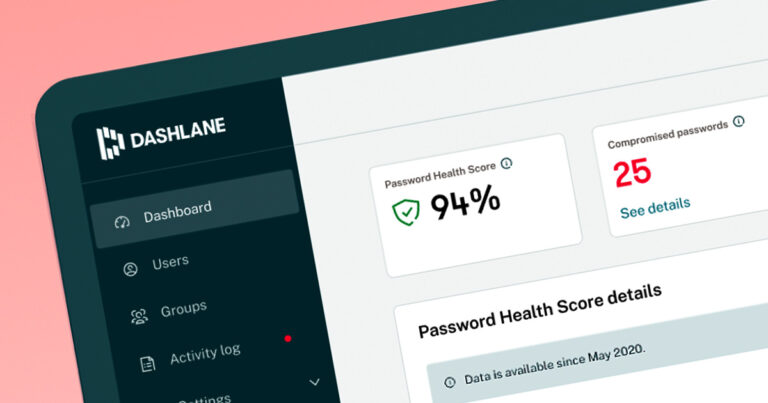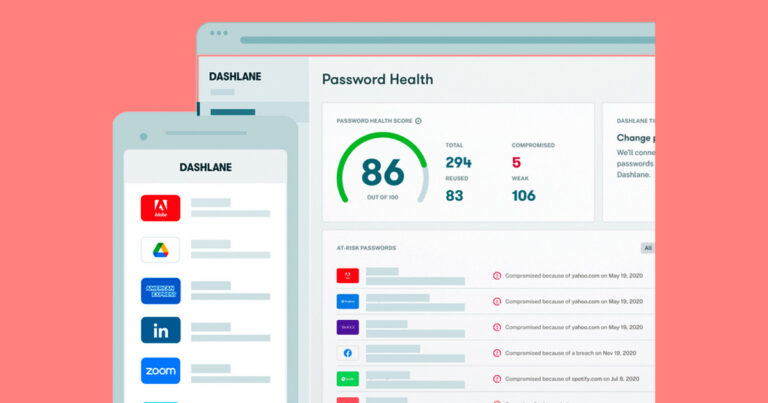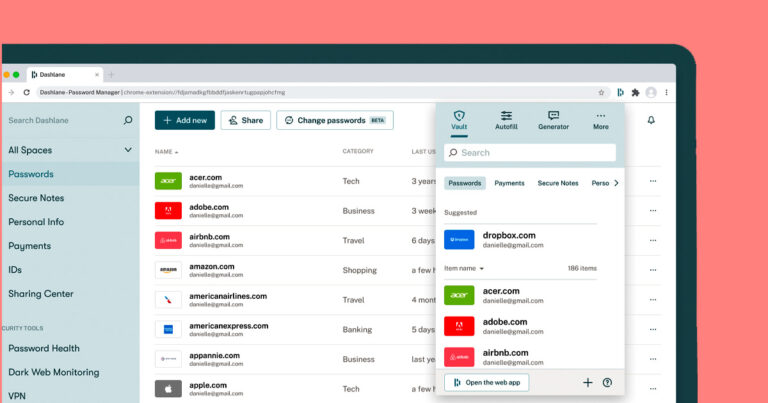Dash to this lane.
Dashlane Password Manager review
It’s difficult to find lots of meaningful differences between the most popular password managers. All of the best password managers we’ve reviewed have military-grade encryption, cloud sync, secure notes, password generators and autofill functionality. Differentiation, then, tends to come down to pricing, the number of users supported and how easy a password manager is to use. And these are areas that make Dashlane well worth considering.

How much do Dashlane plans cost in Australia?
The murky trend with password managers is they tend to advertise monthly value but charge an upfront annual fee. Dashlane bucks that trend, offering monthly and annual options. Start with Dashlane Free if you want to try before you buy, then upgrade to unlimited devices and dark-web monitoring with Dashlane Advanced for US$33 per year or US$3.99 per month.
According to Dashlane, Premium is the most popular subscription tier, which costs US$3.99 a month or US$39.96 per year for everything in Dashlane Advanced alongside a virtual private network (VPN), which is a great way to access Hotspot Shield. Finally, there’s Dashlane Family & Friends for US$71.88 a year or US$4.99 per month for everything in Dashlane Premium, plus a Friends & Family dashboard.
Dashlane Free, Advanced and Premium are built for a single user. But Dashlane Family & Friends supports up to 10 users, which is a great point of difference over 1Password (five), LastPass (six) and Bitwarden (six). Dashlane is one of the cheapest password managers for individual users, and while it’s slightly costlier for its family plan, the extra users (plus an included VPN subscription) boost the overall value.
Compare password managers
How easy is Dashlane to use?
Whether you’re using a free or premium version of Dashlane, your password manager journey starts by creating an account with an email address and a master password. I like the on-the-fly strength rating Dashlane offers while you’re typing in your master password to let you know whether it’s secure. If you’re using Dashlane on mobile, you get a free 30-day Premium trial (without having to add credit card details).
Handily, if you go the Dashlane Google Chrome extension route, Dashlane has a guided process for adding your first credentials, testing autofill and downloading the mobile app. The ‘Add your first login’ step for Dashlane offers popular websites and also acts as a way to import data, with the following choices:
- 1Password
- Bitwarden
- Google Password Manager
- Dashlane backup
- Microsoft Edge
- Mozilla Firefox
- KeePass
- Keeper
- LastPass
- Safari
Realistically, you can select any of the options, including “Other CSV’, because all of them except for ‘Dashlane backup’ prompt you to upload a CSV file with your stored credentials. Preview the data you’re importing or just import all of them. Like other password managers, Dashlane advises you to delete the unencrypted CSV and deactivate any other autofill software or extensions that may otherwise interfere with the newly installed password manager.
When you’re using your browser now, a Dashlane logo will appear in compatible autofill fields. It’s not just for usernames and passwords, either; you can save identity information that will intelligently recommend relevant personal details for corresponding form fields. You’ll be prompted to add this by completing the ‘Autofill’ guide. Admittedly, I did hit a bug while creating this guide that had me perpetually stuck on the second of three steps.
Dashlane’s Google Chrome extension is just as user-friendly as LastPass, recommending commonly used email addresses when creating an account and automatically generating a password that you can one-click accept. There’s a pop-up to prompt you to save the credentials, too, unlike the more manual approaches required from Bitwarden that can lead to accidentally lost credentials.
When logging into sites that have saved credentials, Dashlane automatically populates the fields for faster access. This is more convenient than it is secure, but with a few clicks to get into settings, you can activate biometrics unlock and two-factor authentication on new devices, or check the option to prompt you for your Dashlane master password whenever you log in.
What is Dashlane?
How secure is Dashlane?

Dashlane is a secure password manager with military-grade encryption and all of the trappings you’d expect. The only feature it’s ‘missing’ is Travel Mode which, at the time of writing, was a unique feature for 1Password.
Outside of that, Dashlane has automated cloud sync, document storage, secure notes, a digital wallet and offline mode. For back-end security, there’s end-to-end encryption, a password strength checker and Dashlane Premium users have dark-web monitoring. Unlike LastPass, Dashlane hasn’t ever had a data breach.
Dashlane devices and number of users
Unlike other password managers that have desktop software, Dashlane pushes its users towards smartphone apps and web browsers. There’s a web app, accessible by logging in via browser, plus browser extensions for Chrome, Firefox, Safari and Edge. For mobile devices, there are apps for Android and iOS.
Chromebook and Linux are mentioned in older Dashlane blog posts, but the focus these days is on using the browsers or apps. Basically, if you’re using a platform that supports the browsers listed above, you can use Dashlane via browser extension.
Is Dashpass worth it?

Dashlane is a fantastic password manager. It’s easy to use, straightforward to migrate to, and the convenience of its autofill functions is paired with great opt-in security options. There’s no desktop app and it does seem to prioritise convenience over security at times, but it’s a great place to start for first-time password manger users or those looking to migrate from the complexity of 1Password or breach concerns of LastPass.
How we review password managers
We use a detailed schema to compare password managers across price, features, security and compatibility. Because password managers tend to advertise prices in a monthly breakdown but charge annually, we like a service that offers Australian pricing.
A high-scoring password manager is one that offers plenty of features. The basics are a given—namely, secure credentials storing, a password generator and autofill—but premium password managers should also offer other features like secure document storage, password sharing and a digital wallet. We also like password managers that offer a free version so users can try before they buy or some other form of trial.
Because a password manager’s job is to securely store sensitive data, we appraise security carefully, which starts with military-grade encryption. A good password manager offers end-to-end encryption, biometric authentication options and breach notifications when a user’s credentials may have been compromised. Bonus points for services that can be used as authenticators, offer breach protection, and ones that haven’t had a recent data breach.
Frequently asked questions about Dashlane
Related Articles










